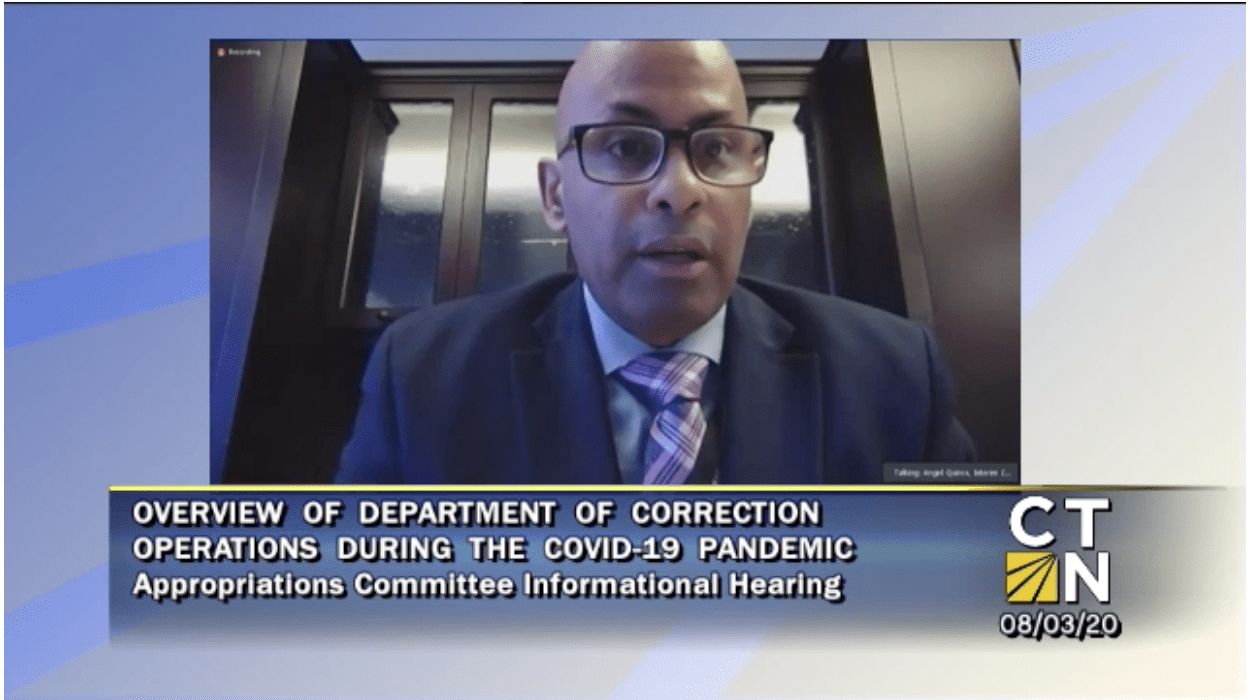With increased overtime, sick leave and inmate medical costs, the state Department of Corrections ended fiscal year 2020 with a $21 million deficit.
“At the peak time of COVID-19 in April, we were averaging 320 staff members out sick per day for all three shifts,” explained Interim Commissioner Angel Quiros at an Appropriations Committee meeting on Monday afternoon. “In May and June, it started decreasing to 15 percent of our staff, but we saw an increase as soon as the executive order was signed by the governor allowing individuals who used their 14-day COVID leave, but tested positive, to have another two weeks.”
Between annual vacations and COVID leave, the amount of overtime needed to cover all three shifts at every corrections facility in the state is higher than it was in April, said Quiros.
An average of the final five pay periods of fiscal year 2020 – the last week of May and all of June – showed an increase of 87,061 employee hours compared to an average of the previous 21 pay periods of 2020. That alone increased department costs by $3.75 million over initial estimates, Quiros said.
“For 2020, OPM had tasked us with reducing 5 percent of our overtime costs — we were on track to get that reduction — but with COVID we did not hit that at all,” Quiros said.
Higher than expected expenses at the Department of Corrections are expected to continue into fiscal year 2021.
Many of the 386 corrections employees who have tested positive for COVID-19, for example, are expected to receive workers compensation, if it is approved in fiscal year 2021, said Michael Regan, director of fiscal services for the department.
Medical expenses for the 1,400 inmates who have tested positive since March are also adding to the total – about $3 million in fiscal 2020 alone — Regan said.
According to Quiros, overtime hours for medical services employees are especially high as the department also struggles to fill vacancies and retain nurses who can receive better compensation in the private sector.
Dropping infections
Quiros reported that the number of inmates and staff testing positive for COVID-19 has declined, and further infection is being contained through quarantine.
According to Quiros, of 2,538 staff members included in a second round of testing, only three asymptomatic positive results were recorded. For inmates, 9 percent testing positive were asymptomatic, compared to 22 percent in the first round of testing.
A dropping population
Since March 1, 2020 the population of inmates has declined by more than 2,000, but very few as a result of medical paroles, said Quiros.
“As of July 31, 2020, 20 inmates were denied and 15 were approved for medical parole while others await a decision,” Quiros explained.
Despite pushback from some legislators in the meeting who expressed concern about the health of inmates forced to congregate in confined settings, Quiros said that there would be no great increase in medical parole, especially for individuals serving long sentences.
“Our main focus is public safety,” he said. “We do not want to put individuals out that might jeopardize the community.”
Even with an increase medical paroles, Quiros said that the correctional population will likely continue to shrink with slightly fewer than normal men and women awaiting sentencing.
Despite the decline, Quiros asked legislators to delay closing any corrections facilities until spring 2021.
“We highly urge those in power not to close a facility in the fall because we need it for COVID separation should a second wave hit,” Quiros said. “We are prepared to make recommendations for a closure in March or April.”

